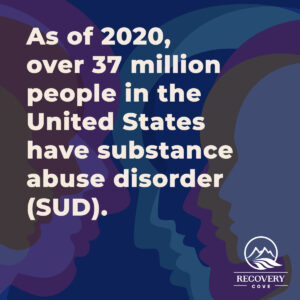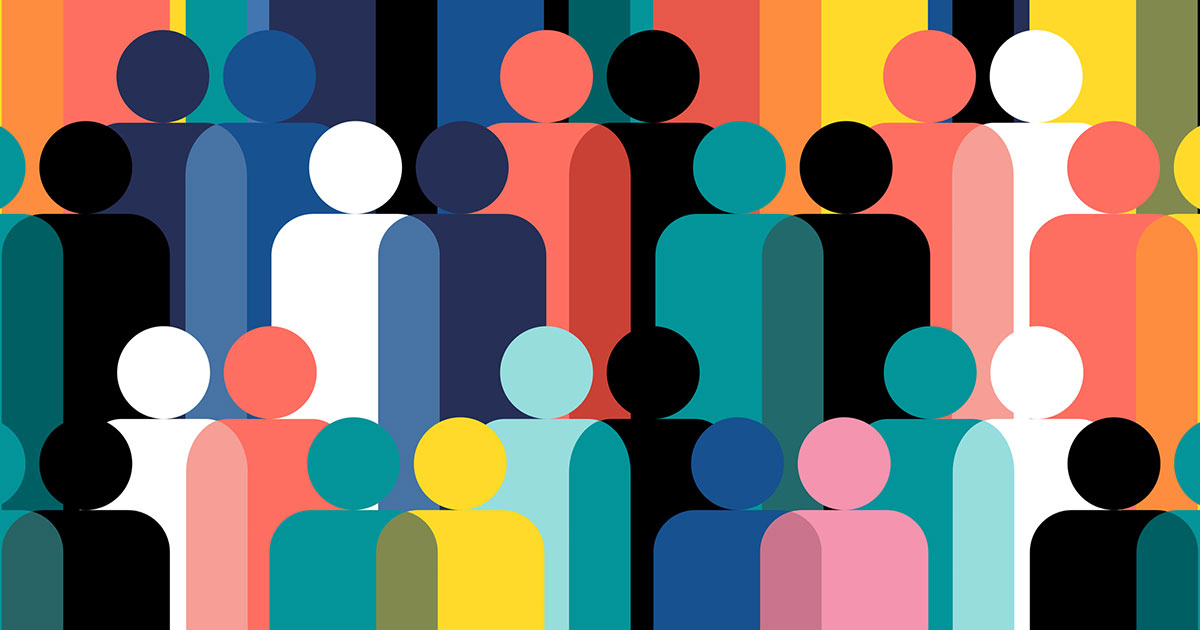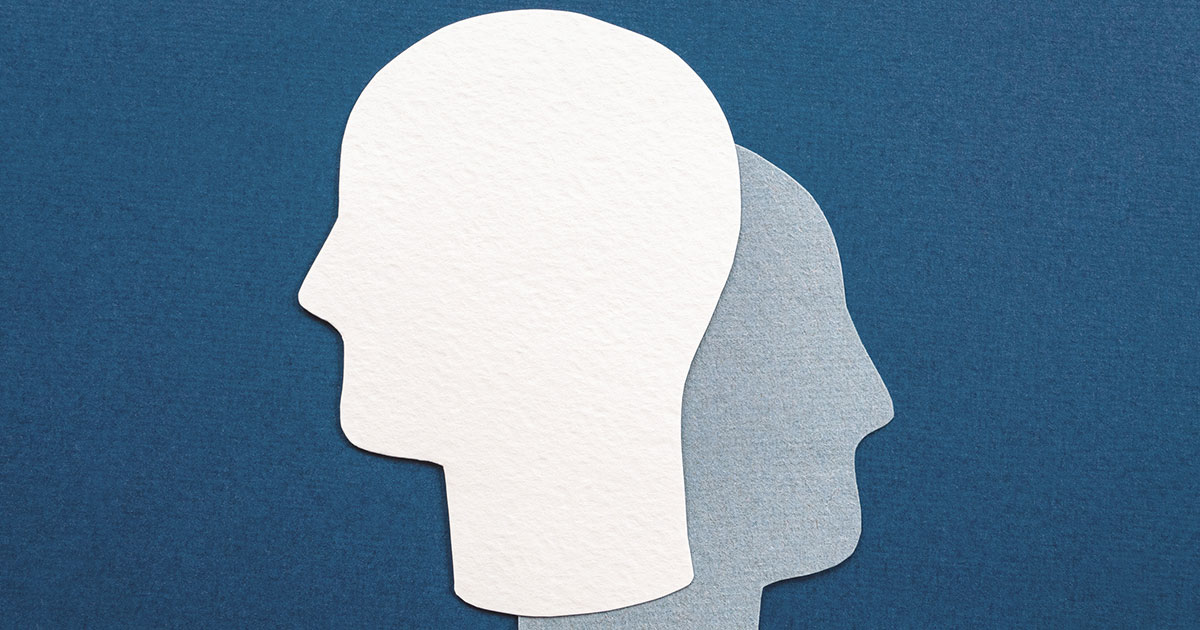Across the United States, over 9.5 million adults have been diagnosed with both a mental health condition and substance abuse disorder. In many cases, suffering from just one of these disorders can pave the way for others. Experiencing two or more co-occurring disorders at once can cause their effects to compound, making the already-complex condition that much more difficult to treat. If you consider how common it is for someone with a substance addiction to also suffer from a mental illness, you may also wonder what it truly means to experience co-occurring disorders, also known as a dual diagnosis or comorbidity.
Mental Health Disorders

As dual diagnosis involves two or more disorders occurring at once, it’s important to know just how common the individual disorders are in the first place. From there, the rest of the statistics will fall into place, and it will be easier to understand exactly how a dual diagnosis works and why the status is more common than you might think.
As of 2020, over 37 million people in the United States have substance abuse disorder (SUD). From alcoholic beverages, nicotine and tobacco products to illegal street drugs and prescription medications, substance abuse is a massive concern. This disorder is borne from various external and internal pressures. These pressures may include peer pressure from friends, family, or even the media, a genetic predisposition for addictive behavior, or a pre-existing mental health disorder that leads to unhealthy coping mechanisms.
Mental health disorders that often co-occur with SUD include but are not limited to depression, anxiety, and post-traumatic stress disorder (PTSD). These disorders are common outside of addiction, as well. They’re so common, in fact, that they make up 30% of all mental health disorder diagnoses in the United States—no small feat, given that 1 in 5 Americans suffer from a mental health disorder.
These three disorders aren’t only common on their own, however. Depression and anxiety are often linked together, not only as commonly co-occurring disorders, but also due to their similar effects on the individual and their similar treatments. PTSD is also heavily linked to major depressive disorder (MDD), as about half of all PTSD sufferers also suffer from depression. Not only do these disorders often occur simultaneously, but as mentioned, they’re also often linked to or caused by SUD. Alternatively, it’s possible for SUD to increase or create feelings of depression, anxiety, PTSD, and more.
With this information in mind, it’s no surprise that when we talk about dual diagnosis, a co-occurrence of SUD and another mental health disorder is usually the topic of discussion. This makes sense when you consider what percentage of addicts have a mental illness—a full 39% of individuals with addiction also have documented mental health issues.
Why Does Substance Abuse Often Occur Alongside Mental Health Disorders?

It’s easy to look at the statistics and say that these co-occurring disorders are so common simply because they’re the result of people who have had mental health issues exacerbated by addiction, or vice versa. While this is the basic premise regarding how many co-occurring disorders come to be, it doesn’t explain how these disorders actually work and why specific mental health disorders are linked so heavily to substance abuse disorder in the first place. Now that we have an idea of how common dual diagnosis really is, it’s important to understand why they’re so common and how they occur so easily.
Depression
Depression, which happens to be the most common mental disorder in the world, is characterized by feelings of exhaustion, disinterest, self-hatred or guilt, and frequent thoughts of self-harm, death, or suicide, among other symptoms. These symptoms are extremely difficult to deal with and persist despite effort or time. A depressive episode may last at least two weeks, sometimes longer, and often has a debilitating effect on a person’s life.
As a result, many people suffering from depression end up turning to alcohol or drugs in order to cope with their negative thoughts and feelings. Even antidepressant medication prescribed by doctors and designed specifically to help relieve depressive thoughts, may have the unfortunate side effect of making the depression worse. Antidepressants can also create dependency and cause withdrawal symptoms similar to those experienced by those with a traditional substance abuse disorder. Depression is only one disorder that has comorbidity with substance abuse, but the patterns can help to explain why co-occurring disorders like these are so common, as well as how and why they begin.
Anxiety
Anxiety has a similar pattern. This disorder is characterized by consistent feelings of worry, tiredness, trouble sleeping, and having difficulty controlling your thoughts. Whether generalized anxiety disorder (GAD) or a subtype like agoraphobia, panic disorder, separation anxiety, or social anxiety, anxiety is difficult to overcome without specialized therapy or treatment. Those that suffer from anxiety disorders are often prescribed medication, but many anti-anxiety medications harbor the potential for abuse. In addition, because anxiety and depression often go hand in hand, the depressive thoughts that compel people to abuse various substances may also be present with anxiety disorders and vice-versa. As a result, people who suffer from anxiety may begin self-medicating with alcohol or recreational drugs.
PTSD
The third most common disorder, PTSD, is another example of this same pattern. PTSD creates feelings of severe anxiety along with intrusive thoughts, flashbacks, or nightmares which can disrupt daily life and cause the individual to avoid contact with others. Not only are issues similar to those that occur alongside anxiety disorders present here, but substance use remains a common way for people with PTSD to attempt to cope with their problems. The intense emotions may be temporarily calmed with opioids or numbed with alcohol, but this self-medication often results in addictive behavior and a substance abuse disorder.
When Substance Abuse Disorders Lead to Mental Health Issues
On the other side, substance abuse disorders can sometimes result in other mental health disorders. For example, drinking alcohol can increase anxious feelings at times, even if one is drinking to try and relax. This is true of both excessive drinking and moderate drinking. Meanwhile, some medications for unrelated health problems can cause feelings of depression or mania, due to the way they alter brain chemistry. It follows that if these drinks or medications become an addiction, the result is a co-occurrence of a substance abuse disorder and a mental health disorder linked directly to the substance being taken.
This pattern of taking a drug to fix a problem and gaining a substance abuse disorder as a result is what causes many cases of comorbid substance abuse and mental health disorders. So, the reason these dual diagnoses are so common is because mental health disorders occur frequently on their own. The addictive nature of substances used to treat or escape them, whether prescribed or recreational, results in a causality loop of co-occurring disorders.
How Common is Dual Diagnosis Across Various Demographics?

Before we discuss the likelihood of dual diagnosis across various demographics, it’s important to define the term “demographic.” Demographics, in this case, refers to specific attributes that may increase or decrease how likely someone is to suffer from mental health disorders or a substance abuse disorder on a statistical level. Common demographics include gender, sexuality, race, religion, and social status.
Income and Employment
It’s commonly believed that one’s social status has a direct impact on whether or not they’re healthy and sober. While there is a correlation between income level and mental health, it often occurs because financial problems can create stress and anxiety, which then results in substance abuse. However, to say that only low-income individuals use drugs or suffer from mental health disorders is false, though money is certainly a related factor. For example, the cost of dual diagnosis treatment may prevent some people from seeking treatment. So, while financial issues aren’t a surefire way to determine the likelihood of a comorbid disorder, they are a factor in both causing them and prolonging them.
Problems in the workplace can also influence how likely someone is to experience a dual diagnosis, and for a similar reason. Stress and anxiety can stem from a bad work environment or a strenuous job with relatively low pay. In a higher paying job, there may be more work necessary, and as a result, less free time and more to worry about. Employed men have an increased likelihood of suffering from a substance abuse disorder, and employed women have an increased likelihood of a mental health disorder.
Gender, Sex, and Sexuality
Gender and sex plays a large role when it comes to mental health statistics. While women are generally more likely to suffer from depression and anxiety than men, men are statistically more likely to be diagnosed with co-occurring disorders. However, between 1995 and 2001, the percentage of women seeking dual diagnosis treatment rose from 28% to 44%. Additionally, there’s evidence to suggest that women are more likely to have two kinds of mental health disorders than men, such as both bipolar disorder and depression. Researchers believe hormones and genetics have a great deal of impact on our mental health.
For instance, the distribution of gray matter in the brain differs based on sex, and makes men more likely to indulge in risk-taking behavior than females. Meanwhile, women are more likely to show addictive behavior early on. Gender norms and upbringing also plays a role. Women are more likely to suffer from gender-based violence and abuse, which can lead to trauma and the need to cope with said trauma, making women more likely to self-medicate. Because of these factors, it appears that men are simply more likely to be diagnosed in the first place. Meanwhile, women are more likely to have a mental health condition, but often must worry about experiencing sexual harassment and sexist behaviors when seeking mental health treatment.
For people under the LGBTQIA+ umbrella, comorbid mental health disorders are also more likely thanks to homophobic and transphobic abuse. This is another case of stressful situations and trauma resulting in multiple mental health problems. These individuals also experience a difficult time getting treatment because of societal norms and the risk of further abuse.
Race, Ethnicity, and Nativity
A person’s race, ethnicity, and nativity status may also affect their likelihood of developing or being diagnosed with a comorbid disorder.
In general, foreign-born citizens are less likely to suffer from substance abuse disorders than natively born Americans. The opposite is true for foreign-born Latin Americans, however. Statistically, the rate increases with time spent in the United States, and increases among the descendants of these immigrants. Due to the financial status of many modern immigrants, as well as anti-immigration sentiments, it seems likely that the occurrence of dual diagnoses has more to do with stress and abuse than genetic factors.
Dual Diagnosis Treatment for Addiction and Co-occurring Disorders

Now that you know how common it is to have a co-occuring disorder, alongside an addiction, you may be wondering how these disorders are treated and where to go if you or a loved one needs help with a dual diagnosis. For the vast majority of people, the answer begins with treatment from trained professionals who know the importance of treating any co-occurring disorders when it comes to recovery from substance use disorder.
With professional treatment that specifically addresses the issues caused by dual diagnoses, you can safely recover from your substance of choice while participating in therapy designed to mitigate your mental health disorders. It is only by treating both aspects of your struggle that you can begin—and stay on—the road to recovery. For most, effective treatment involves group therapy, individual counseling, psychiatric treatment, medication-assisted treatment, nutrition, exercise, and more. By seeking help from a professional facility, you can work with a caring staff to design treatment that will address your co-occurring disorders and unique recovery needs.
If you are in the Pennsylvania area and looking for a dual diagnosis program, please contact us at any time. We are here to offer support and ensure you or your loved one receives the care you deserve.
Sources:
- Schmidt, L. M., Hesse, M., & Lykke, J. (2011). The impact of substance use disorders on the course of schizophrenia—a 15-year follow-up study: dual diagnosis over 15 years. Schizophrenia Research, 130(1-3), 228-233.
- Tiet, Q. Q., & Mausbach, B. (2007). Treatments for patients with dual diagnosis: a review. Alcoholism: Clinical and Experimental Research, 31(4), 513-536.
- Horsfall, J., Cleary, M., Hunt, G. E., & Walter, G. (2009). Psychosocial treatments for people with co-occurring severe mental illnesses and substance use disorders (dual diagnosis): A review of empirical evidence. Harvard review of psychiatry, 17(1), 24-34.

Clinical Director
Christine Todd is a Licensed Professional Counselor and an Advanced Certified Drug and Alcohol Counselor who enjoys working directly with a population that struggles with addiction and mental health disorders. Christine brings many years of clinical experience to the team at Recovery Cove, where she is currently the Clinical Director. In her role, she oversees the clinical department as a leader, educator and mentor, designing programming and protocols for a diverse client population.




